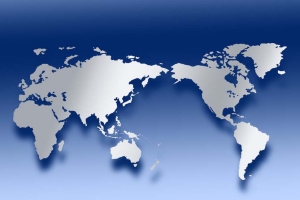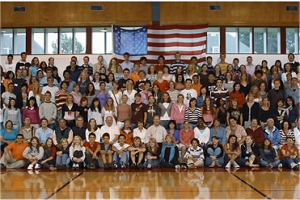Vice Versa
International Graduate Enrollment Increases at U.S. Universities

International graduate enrollment at U.S. universities has grown substantially, increasing 7 percent from 2006 to 2007 -- the largest gain since 2002 -- according to a new study released November 5 by the Council of Graduate Schools (CGS).
International graduate enrollment at U.S. universities has grown substantially, increasing 7 percent from 2006 to 2007 -- the largest gain since 2002 -- according to a new study released November 5 by the Council of Graduate Schools (CGS).
Under the U.S. educational system, graduate students work toward master’s, doctoral or other advanced degrees. The November 6 CGS study also reported that 87 percent of U.S. graduate school deans have participated in some sort of international outreach activity in the past two years, with almost half visiting foreign universities to build partnerships.
CGS President Debra Stewart said it is “encouraging to see graduate school deans taking such an active role to recruit highly qualified international students.”
Total enrollment of students from India and China -- the countries with the greatest number of students in the United States -- rose 14 percent and 15 percent respectively, according to the CGS study.
First-time enrollment of students from the Middle East rose 12 percent, while total enrollment of students from the Middle East rose 5 percent. Because graduate degrees can take a long time to complete, increases in first-time enrollment can take several years to be fully reflected in total enrollment figures.
Enrollment figures for international graduate students increased 1 percent in 2006, while first-time enrollment figures were up 12 percent. The 7 percent gain reported in 2007 was accompanied by a 4 percent increase in first-time enrollment.
STATE DEPARMENT EAGER TO WELCOME INTERNATIONAL STUDENTS
The State Department has taken a number of steps to expedite the processing of student visa applications, including adding new consular positions, negotiating extended reciprocity agreements so that students are not required to apply for visas as frequently, and directing U.S. embassies and consulates to put student and exchange visitors at the head of the queue when scheduling visa interviews. (See related article.)
The number of student and exchange visitor visas issued in fiscal year 2006 rose 15 percent to an all-time high of 591,050, according to the State Department.
The United States is eager to welcome more international students and wants to provide more opportunities for financially disadvantaged students to attend U.S. colleges and universities, a State Department official told a congressional hearing in June.
Rather than visas, the biggest challenge for international students is the cost of higher education, said Thomas Farrell, deputy assistant secretary for academic programs in the Bureau of Educational and Cultural Affairs. Currently, 78 percent of international students rely on their families and personal resources, he said. Another problem is lack of English language ability, particularly among disadvantaged populations, Farrell told a House of Representatives subcommittee hearing June 29.
It is “an important strategic priority … to provide educational opportunities to a broad and diverse segment of young people overseas, including women, minorities and those from financially disadvantaged backgrounds,” he said. (See related article.)
In the 20th century, the United States became an educator of the world, according to a 2006 report by the National Science Foundation (NSF). Although international students earned less than 10 percent of all doctorates awarded in the United States in 1960, by 1999 they were earning more than one-third of all doctorates in the fields of science and engineering and 17 percent of doctorates in other fields, according to the report U.S. Doctorates in the 20th Century. (See related article.)
The CGS survey data have been confirmed by research from the NSF, which in a report issued earlier in 2007 found that first-time enrollment of foreign graduate students in science and engineering fields began to rise in 2005.
According to Open Doors 2006, a study by the Institute of International Education, approximately 565,039 students came from around the world to study at schools of higher education in the United States in 2006. The leading country of origin was India, which sent 76,503 students, followed by China and the Republic of Korea, which sent 62,582 and 58,847 students, respectively. (See related article.)
As for the fields of study in which international students enroll at the graduate level, total enrollment in business rose 10 percent, engineering 8 percent, life sciences and agriculture 3 percent, and arts and humanities 1 percent. There was no enrollment growth in physical and earth sciences, and in education enrollment fell 2 percent, according to CGS.
The CGS data are based on the responses of 172 graduate schools, including 76 percent of the 25 institutions with the largest international student enrollments.
The 2007 CGS International Graduate Admissions Survey (PDF, 12 pages) is available on the CGS Web site.
For information on studying in the United States, see the State Department’s EducationUSA Web site. Information on visa procedures and traveling to the United States is available at www.travel.state.gov and in the State Department eJournal See You in the U.S.A.
Recently on Vice Versa
Foreign Students Enhance Global Outlook at U.S. High School
 Washington International School offers broad exposure to many cultures
Washington International School offers broad exposure to many cultures
World Youth Building a Future
 This edition of eJournal USA, "World Youth Building a Future," opens a window on the real life experiences of young people who have left home and family to participate in an international exchange program.
This edition of eJournal USA, "World Youth Building a Future," opens a window on the real life experiences of young people who have left home and family to participate in an international exchange program.